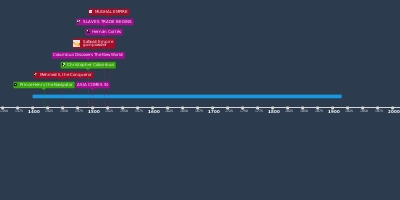nov 1, 1543 - The Scientific Revolution
Description:
Copernicus, "On the Revolutions of the Heavenly Spheres"1543
Nicolaus Copernicus was not an accomplished observational astronomer, but rather a mathematician who felt that Ptolemy's geocentric system (earth-centered universe) was too complicated and failed to accord with the observed motions of the heavenly bodies. In his work, "On the Revolutions of the Heavenly Spheres", Copernicus hoped that his heliocentric conception (sun-centered universe) would offer a simpler more accurate explanation. He argued that the universe consisted of eight spheres with the sun motionless at the center and the sphere of the fixed stars at res in the eighth place. The planets revolved around the sun in the order of Mercury. Venus, the earth, Mars, Jupiter, Saturn, and the moon revolving around the earth. Moreover, according to Copernicus, the movement of the sun and stars was really explained by the daily rotation of the earth on its axis and the journey of the earth around the sun each year. Copernicus, however, remained conservative and did not reject Aristotle's principle of the existence of heavenly spheres moving in circular orbits.
Added to timeline:
Date:
nov 1, 1543
Now
~ 482 years ago
